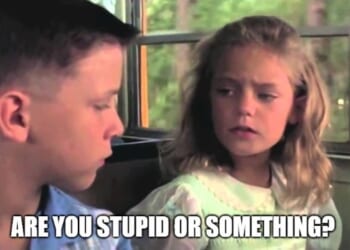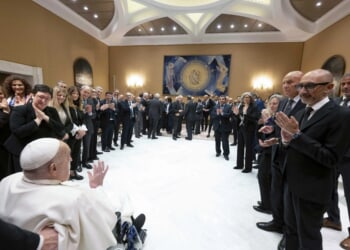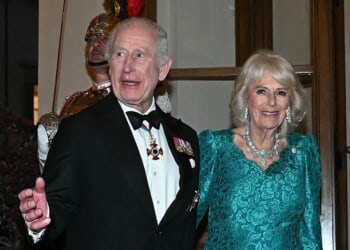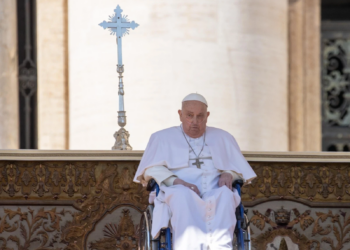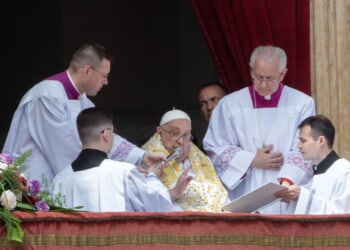I was awakened early this morning by my wife informing me that Pope Francis has died. “Wow,” was my instant verbal reaction. I grabbed my bedside rosary ring and did a Divine Mercy Chaplet for his soul. It was probably the best I could muster at that moment.
That was followed by a text from a friend and Vaticanista plugged into all things Francis, who watched with great alarm what has unfolded in the Catholic Church during this pontificate. I told him I was a little surprised by the news because Francis had somewhat rebounded from his long hospital stay and was somewhat active over Easter weekend. I asked my friend if he and his sources had expected this. His response: “Definitely.” His concluding words: “It will be all chaos and arguing now.”
In truth, it has been all chaos and arguing since Francis took over the papacy in 2013. No pope in modern times has sowed this much confusion in the Chair of St. Peter. Both liberals and conservatives alike should concede that.
In the first year of his papacy, Francis infamously urged a group of young Catholics to “make a mess of things.” He said that with a grin to a group of Argentine pilgrims: “I want to tell you something. What is it that I expect as a consequence of World Youth Day? I want a mess.” That was hardly the only time Francis said this. Just last September, he implored yet another group to “wreak havoc, make a mess.”
That became a metaphor for this papacy.
The chaos was so bad that at one point I conceded that the single best summation of the papacy had been offered by Cardinal George Pell before his death in January 2023. “[T]his pontificate is a disaster in many or most respects,” said Pell, “a catastrophe.”
I urge those reading this to please understand that I haven’t said these things publicly until now. Quite the contrary, for years, I only defended Francis in public. In March 2019, halfway through his papacy, I wrote an extraordinarily lengthy piece defending Francis in Crisis Magazine. That piece was widely read. Even as I defended him, I conceded the chaos and confusion.
My public defenses, however, soon ended. The Francis papacy became overwhelming, inexplicable, baffling.
When Francis had his long hospital stint and appeared to be near death’s door, I declined media requests. I’m declining again. I don’t want to spend the coming weeks speaking negatively about the pope at his death. Many of you reading this now likely assume that I’ve had this obituary pre-written. No. I didn’t want to devote the time. I long ago had enough. My frustration had turned to anger and then almost indifference.
What can I say at this moment? At the risk of sounding uncharitable, which I always feared, I’ll make a few observations.
The Fox News headline article this morning opened with this lead: “Pope Francis … worked to instill progressive influences on the global church while maintaining unity with conservatives amid years of turmoil.”
That’s not accurate. Francis did not want unity with conservatives, nor especially with traditionalists. To Francis, “traditionalists” became a dirty word. They were modern Pharisees. He lambasted their “rigidity.” They felt targeted and persecuted by him. His appointments to the American Church were outrageously political and ideological, stacking the cardinals with staunch leftists, particularly with his stunning elevations and promotions of Cardinal Robert McElroy. (Some feared that his final move might be to replace Cardinal Timothy Dolan in New York with the LGBTQ priest Fr. James Martin. Inconceivable as that might sound, I wouldn’t have been surprised.) (RELATED: What Cardinal McElroy Gets Wrong on Immigration)
Francis always condemned politics and ideology, but his appointments, certainly in America, were political and ideological. The only question was to what extent he personally knew what he was doing. Was this his initiative or the doing of “progressive” advisers? I’ve never been able to figure that out.
Francis talked incessantly of mercy, but such was not his treatment of traditionalists. Last Saturday evening, I attended a Traditional Latin Mass for the Easter Vigil service. It was four hours long, with every word in Latin. The thriving parish was teeming with young families, babies, altar boys, and future priests and nuns — unlike the vast majority of old, dying parishes. I couldn’t help but think of Francis at that moment, and how his papacy was not charitable to these members of the flock.
I’ve thought a hundred times about the warnings of The American Spectator’s fearless Catholic journalist, George Neumayr, who very unexpectedly died in January 2023. In 2017, George wrote the aptly titled book, The Political Pope: How Pope Francis is Delighting the Liberal Left and Abandoning Conservatives. He predicted that rather than leading a reinvigorated Catholic Church, with exploding numbers, the first Jesuit pope would preside over a shrinking Church, as he had in Argentina. George assured that the “Francis effect” would be just the opposite of what liberal media advocates were predicting.
From the outset, I argued with George. I could fill this article with statements from him. I won’t, but one series of exchanges with George always struck me.
I marveled to George at the mystery of why Francis had not visited his home country of Argentina. Not once. The fact that he didn’t is extraordinarily striking. This pope was picked in part because he was a non-European. Surely, figured many 2013 Conclave members, Bergoglio would bolster the Church’s sagging numbers in its onetime stronghold of the Western hemisphere. Nope. Just the opposite happened — as George foresaw.
Most mystifying: Jorge Mario Bergoglio never once returned in triumph to his native nation. How could that be? Think of Pope John Paul II, the first non-Italian pope in 455 years. The first Polish/Slavic pontiff repeatedly returned to his native land, each time greeted like a hero by his proud countrymen.
And yet, Francis never once went back. Why? George insisted that Francis wasn’t welcome in Argentina, and that he would be embarrassingly booed rather than cheered. I found that difficult to believe. But alas, Francis never once set foot back home.
That really was incredibly revealing.
My last comment: I came back into the Catholic Church in April 2005, during the death of John Paul II. I could always count on the latest from the Vatican to feed my soul. I would awake in awe to fulfillment and wisdom from the Chair of St. Peter. That ended in 2013. In that sense, it felt like the chair was empty for much of the last 12 years. The number of Catholics, especially conservative ones, who left the Church under Francis is no doubt astonishingly high. I’ve had to talk many into hanging in there and staying. Moreover, I could name various prominent non-Catholics who would have converted these past 12 years if not for Francis.
But wait, did Francis not bring liberals into the Church and grow it that way? No. Liberals want to remake the Catholic Church in their own image, only for the purpose of taking it down, not joining it. Francis endeavored to please them, but there’s no pleasing them. Catering to them is a fool’s errand, a destructive one.
I’ll finish this statement with sincere prayers for the soul of Jorge Mario Bergoglio, who I’ve prayed for regularly these 12 years, and especially for the cardinals as they choose his successor. I ask forgiveness for any lack of charity in this piece. Above all, my prayers are for the man who will need to clean up the mess.
READ MORE:


![NYC Tourist Helicopter Falls into Hudson River, Siemens Executive and Family Among Those Killed [WATCH]](https://www.right2024.com/wp-content/uploads/2025/04/NYC-Tourist-Helicopter-Falls-into-Hudson-River-Siemens-Executive-and-350x250.jpg)
![Biden Drops Racial Slur During First Public Speech Since Leaving Office [WATCH]](https://www.right2024.com/wp-content/uploads/2025/04/Biden-Drops-Racial-Slur-During-First-Public-Speech-Since-Leaving-350x250.jpg)



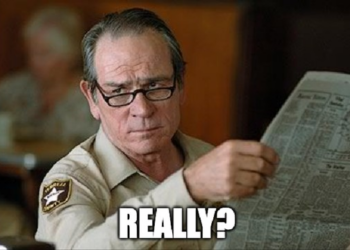
![Green Day’s Cringe Trump Diss Ends in Fire and Evacuation [WATCH]](https://www.right2024.com/wp-content/uploads/2025/04/Green-Days-Cringe-Trump-Diss-Ends-in-Fire-and-Evacuation-350x250.jpg)
![Obama in 'Deeply Concerned' About Trump Removing Terrorist Sympathizers from Universities [WATCH]](https://www.right2024.com/wp-content/uploads/2025/04/Obama-in-Deeply-Concerned-About-Trump-Removing-Terrorist-Sympathizers-from-350x250.jpg)
